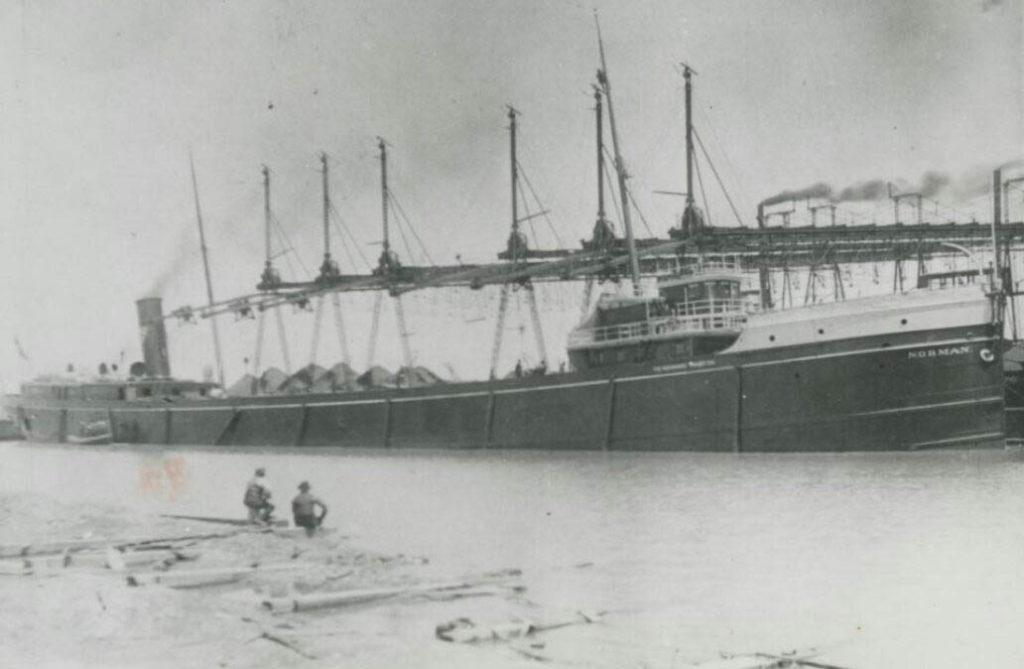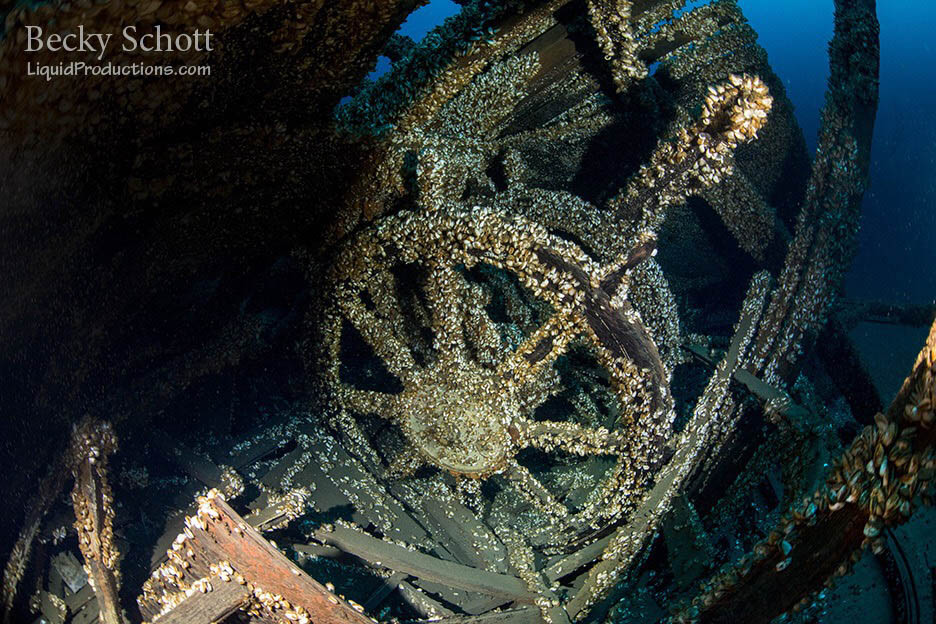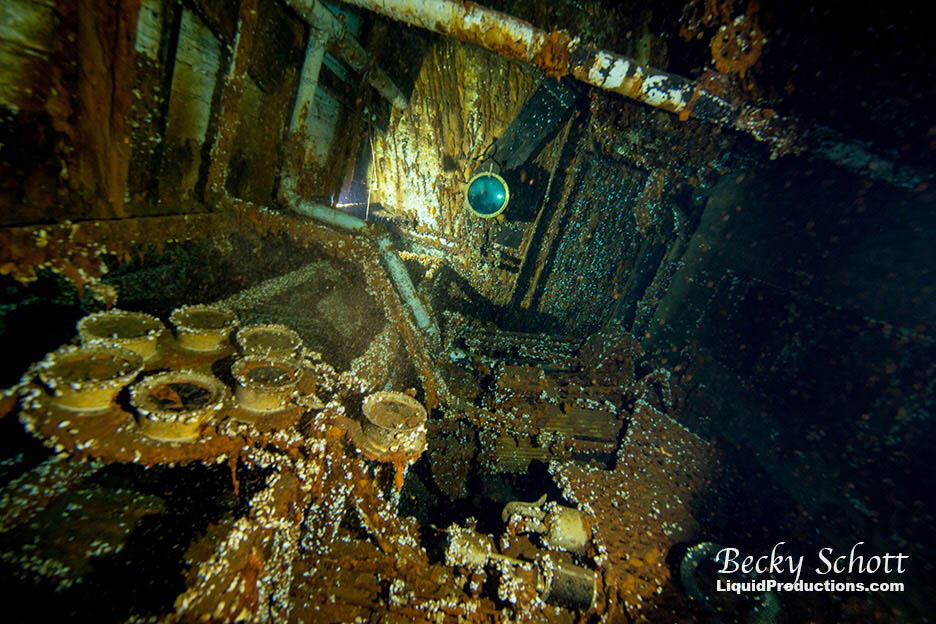The Norman was designed by the Globe Iron Works in Cleveland, Ohio in 1890. It was one of the first propeller-driven steel lakers to haul iron and coal on the Great Lakes. Constructed for the Chapin Iron Mining Company, it ran between the docks of the company in Escanaba, Michigan and Cleveland, Ohio.

The Norman had a total length of 296.5 feet, a 40.4 foot beam, a hold depth of 21 feet, and a gross tonnage of 2.304 tonnes. It had an elevated forecastle and pilothouse, an aft cabin that housed the propulsion equipment, and an open deck that contained eight hatches in between. The Norman was powered by a triple steam expansion engine designed by Globe Iron Works that produced 1200 horsepower, along with two 121⁄2-foot Scotch boilers.
The Norman was loaded with coal on 30 May 1895 and bound for Escanaba. Dense fog reduced visibility, and steamer Jack (Canada) collided with the Norman. The Jack hit the Norman amidships and almost sliced her in two. The Norman sank quickly and took 3 of the crew members with her. The Jack and a nearby steam barge, Sicken rescued the rest of the crew.
Salvage attempts failed in 1896. 100 years later in 1996, the ship was discovered in 210 feet of water. It sits angled at the bottom of the lake with its starboard side pointing up to the surface. There is wide opening from the amidships of the collision. A vortex, capstan, deck cleats, and the two bow anchors are all on the portion of the bow. In place are the foremast and the mainmast, rising about 60 feet. The portion aft is isolated from the rest of the container. The steam engine is shown and the boilers are exposed.

For divers, this is an advanced technical dive, in the dark cold water of Lake Huron. The SS Norman is located in Lake Huron, 10.35 miles east-south of Museum of the Presque Isle.
Thanks to Becky Kagan Schott for her photography contribution of the SS Norman.
You can find Becky at Liquid Productions @ Facebook and Instagram at @becky_kagan_schott







